Background and Need
The proposed 2026 service changes target WTA's routing in south Bellingham and Fairhaven, with a focus on routes serving Western Washington University (WWU). At times, current service in this area is not flexible enough to adjust to periods of high and low demand. WWU's synchronized class start and end times lead to major spikes in demand that overburden the current routes, while lulls in demand result in buses with low ridership, particularly during out-of-session and summer months. Riders whose destination is somewhere other than the campus are forced to travel through campus on buses, which at times, are standing room only. Deciding on a route is confusing due to the myriad of bus lines extending from Bellingham Station to the campus and south Bellingham.
Current service issues:
- Difficult to keep buses on-time
- Limited flexibility to meet shifting demand
- Overly complex routing
Project Goals and Overview
The overall goal is to improve service performance using the same level of resources (no new service hours). WTA's Planning Division, supported by a team of consultants, prepared alternatives to the current service, spending over a year examining routing, timing, and interlinements to arrive at the current recommendation.
The top five goals:
- Improve productivity and efficiency
- Facilitate service levels that adapt to demand
- Simplify route structuring
- Improve overall on-time performance
- Provide improved service in a cost-neutral way
What Would be Changing?
The majority of the proposed 2026 service changes stem from a redistribution of service around WWU:
- Frequent Route 190: Instead of the current blue line, which combines 6 overlapping routes (the 190,105,107,108,196,197) to create 15-minute service, the new service would rely on a backbone 190 route with 15-minute service during schooldays and extend the GO Line from Bill McDonald at Samish to Lakeway at Lincoln.
- WWU Shuttle Flexibility: Additional shuttle trips would be provided through campus when the 15-minute Route 190 trips cannot accommodate all of the students.
- Timed Transfers: Transfer points would exist in three locations (Bill McDonald at Samish, Bill McDonald at Rec Center, and Bellingham Station). These locations would help facilitate transfers from the routes 5, 6, and 7 to the 190 or shuttles with short and more consistent wait times.
- Simplified Network: The proposed new service would consist of just 6 routes as opposed to the current 10. The majority of riders would only need to utilize the Route 190 and shuttles. Shuttles would be renamed to distinguish them from Route 190, which has a different alignment.
Detailed Changes by Route
Route 5 (New)
- Replaces Route 105 (Fairhaven)
- Serves Samish Way
- Transfers to 190 at Bill McDonald and Samish
- More direct connection between Fairhaven and Downtown
- Removal of Edgemoor Loop (low ridership area)
Weekday
Service Span: 7:35 am to 8:50 pm
Service frequency: 1 per hour (14 trips per day)
Saturday
Service span: 8:35 am to 8:50 pm
Service frequency: 1 per hour (13 trips per day)
Sundays
Service Span: 9:35 am to 7:50 pm
Service frequency: 1 per hour (11 trips per day)
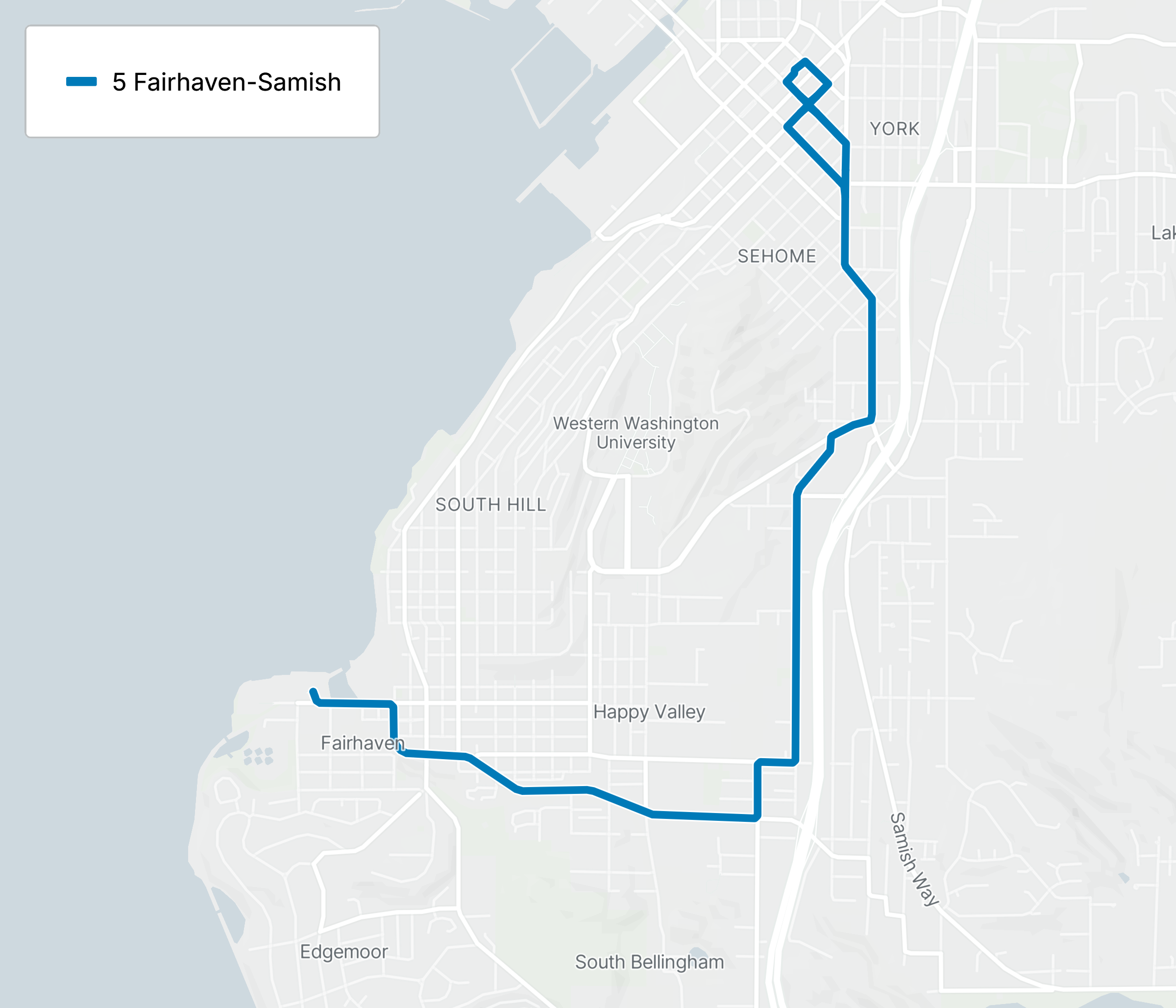
Route 6 (New)
- Replaces Routes 196 &197
- Connects the Puget and York neighborhoods to Downtown
- Transfers to Route 190 at the Bellingham Station
Weekday
Service span: 8:10 am to 8:25 pm
Service Frequency: 1trip per hour (13 trips per day)
Saturday
Service Span: 9:10 am to 8:25 pm
Service Frequency: 1 per hour (12 trips per day)
Sunday
No Service
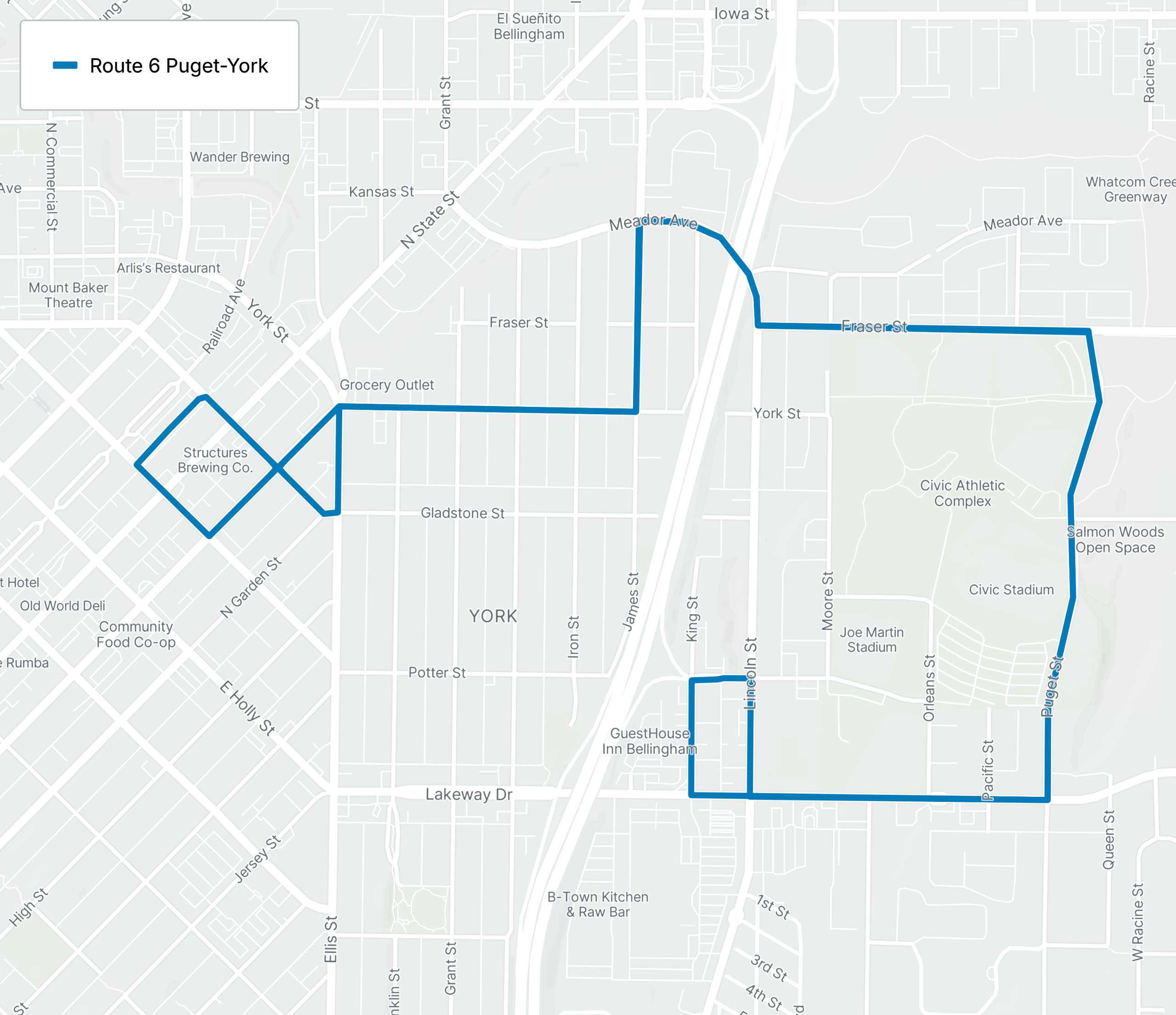
Route 7 (New)
- New connection to South Campus
- Replaces a portion of Routes 107 and 108, Shuttle routes 105s &14s, and one trip per hour on Route 14
- Provides more service to Happy Valley and Samish Way
- Transfer option to Route 190 at WWU Rec Center Stop
Weekday
Service Span: 7:25 am to 8:40 pm
Service Frequency: 1 per Hour (13 trips per day)
Saturday
Service Span: 8:25 am to 7:40pm
Service frequency: 1 trip per hour (12 trips per day)
Sunday
No Service
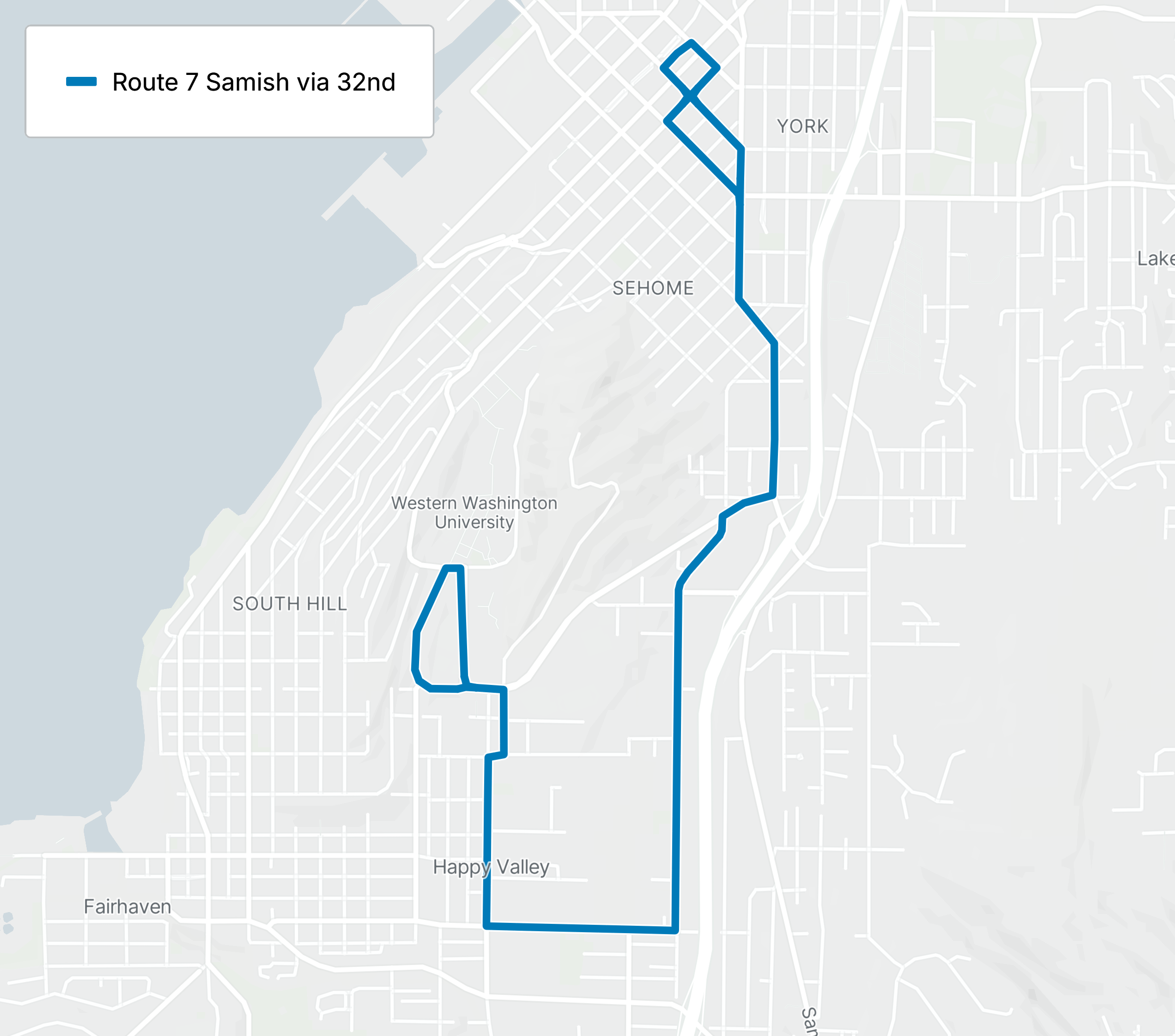
Route 14 (existing route with changes)
- Continues connection between Downtown, WWU, and Fairhaven
- Continues one bus serving routes 14-15-24/29
- Continued service to Happy Valley
- Reduced frequency from 2 buses/hour to 1 bus/hour
Weekday
Service Span: 6:10 am to 8:10 pm
Service Frequency: 1 bus per hour (16 buses per day)
Saturday
Service Span: 8:10 am to 8:10 pm
Service Frequency: 1 bus per hour (13 buses per day)
Sunday
Service Span: 8:10 am to 8:10 pm
Service Frequency: 1 bus per hour (14 buses per day)
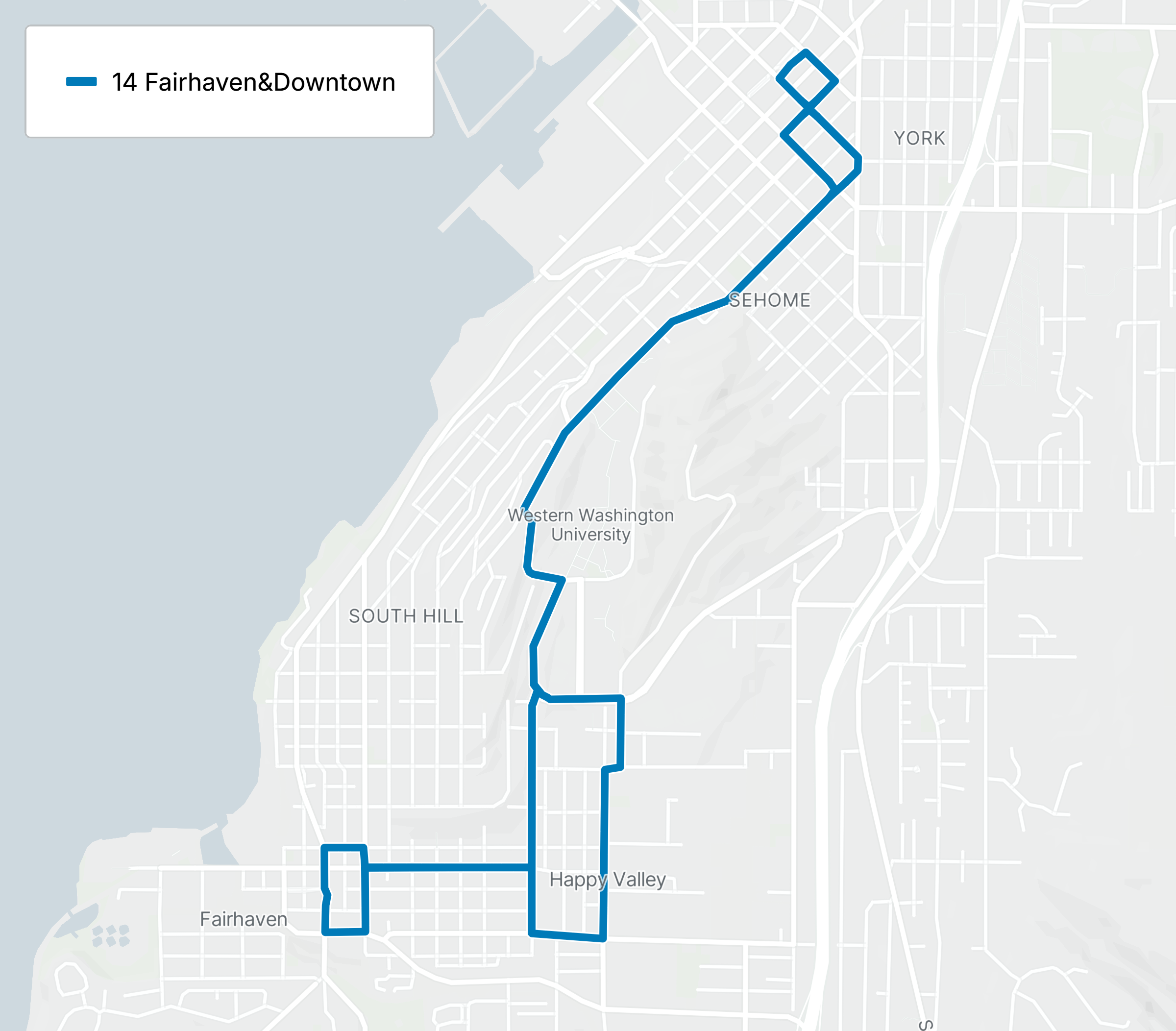
Route 190 (existing route with changes)
- Backbone corridor for service around WWU campus
- Increased frequency extends GO Line to Lincoln at Lakeway
- Timed transfers provided for other routes
Weekday
Service Span: 6:55 am to 10:25 pm
Service Frequency: 4 buses per hour (53 Trips per day)*
Saturday
Service Span: 8:10 am to 8:55 pm
Service Frequency: 4 buses per hour (45 trips per day)*
Sunday
Service Span: 8:10 am to 8:10 pm
Service Frequency: 2 buses per hour (26 buses per day)
*Possible shift in schedule to 3 buses per hour on Saturdays and during out-of-session periods.
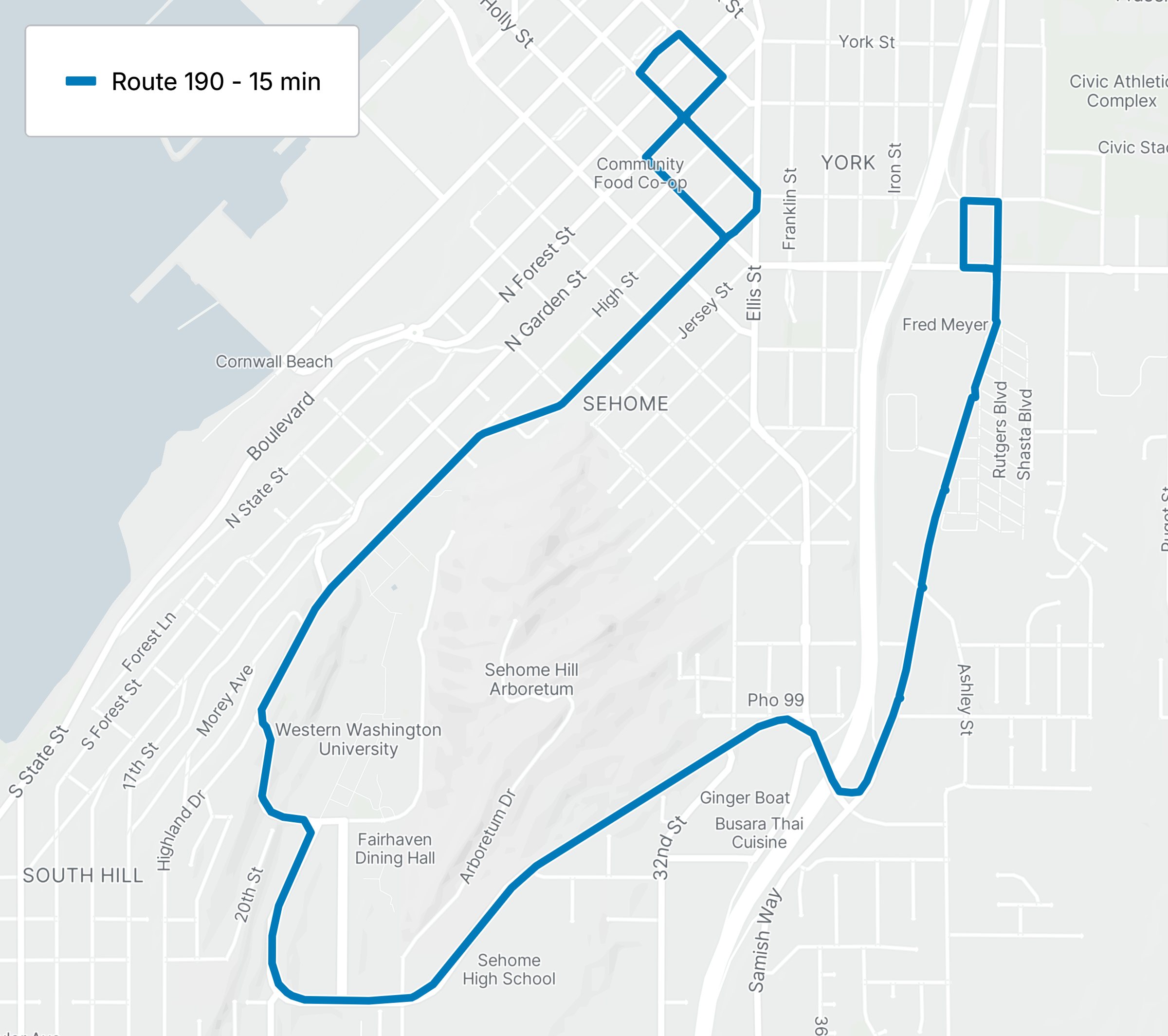
Route 90 (Viking Circulator)
- Helps the route 190 meet spikes in demand
- Provides simplified and consistent routing from Bill McDonald at Samish to Billy Frank Jr at Holly St.
- Replaces all WWU Shuttles
- Provides clockwise and counterclockwise service
Weekday
Service Span: 7:41 am to 4:30 pm
Service Frequency: Intermittent (35 buses per day)
Saturday
No Service
Sunday
no service
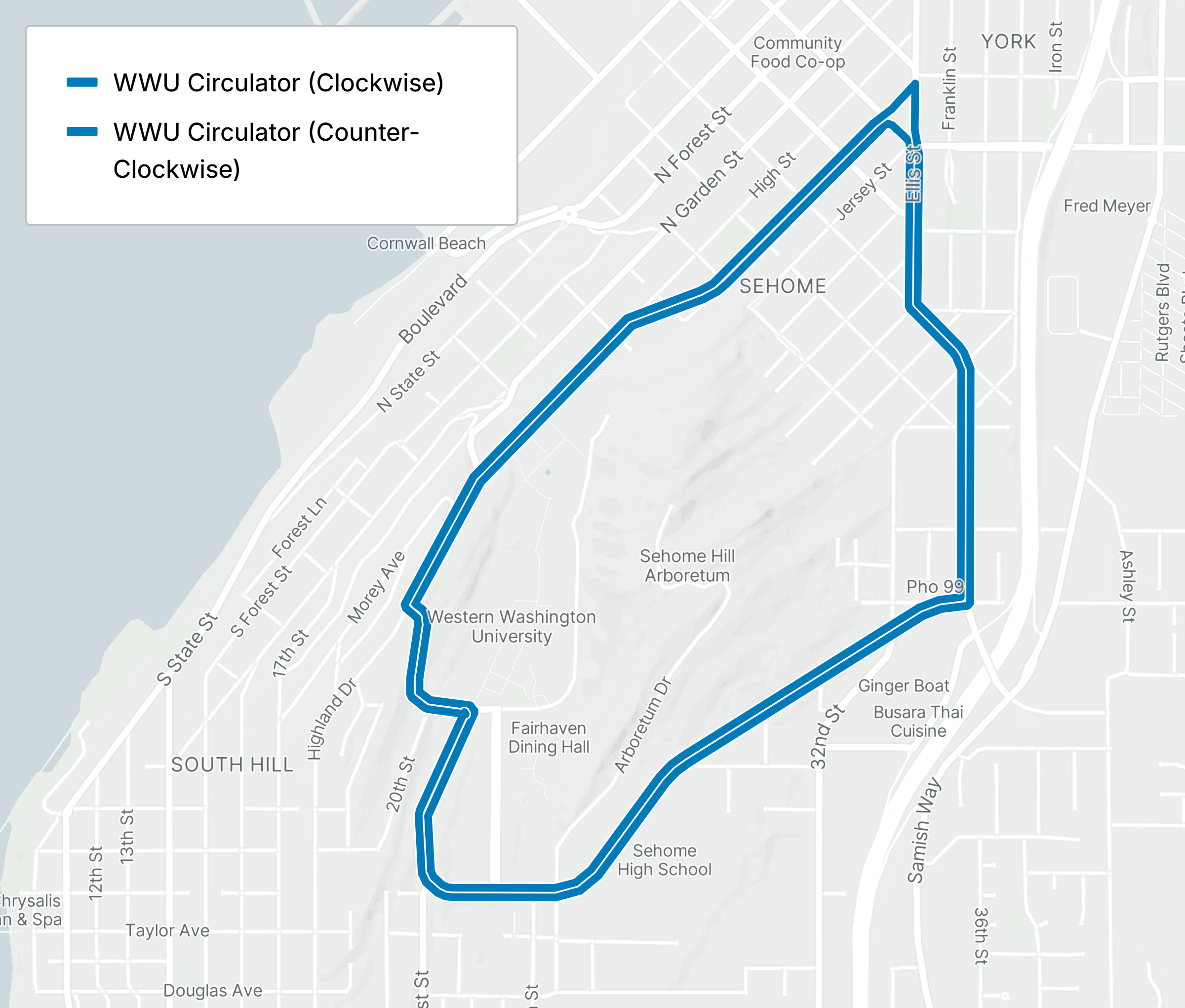
Transfer Points - How would they work?
Transfer points are key to the
2026 service change proposal and are a concept utilized by transit agencies
across the country. They allow a smaller number of routes to serve a greater
area while giving riders more choice in their destination. The proposed 2026
service change utilizes transfer points where possible to streamline service
and reduce route overlap. Relatively few riders will have to utilize transfer points, but we worked hard to make them as seamless as possible.
Key Features:
- 3 transfer points (Bill McDonald at Samish, Bill McDonald at Rec Center, and Downtown Station)
- Majority of transfers taking place at Bill McDonald at Samish
- The majority of transfers between routes are timed to be between 3-7 minutes
- WTA is planning on providing additional amenities at bus stops including real-time signage
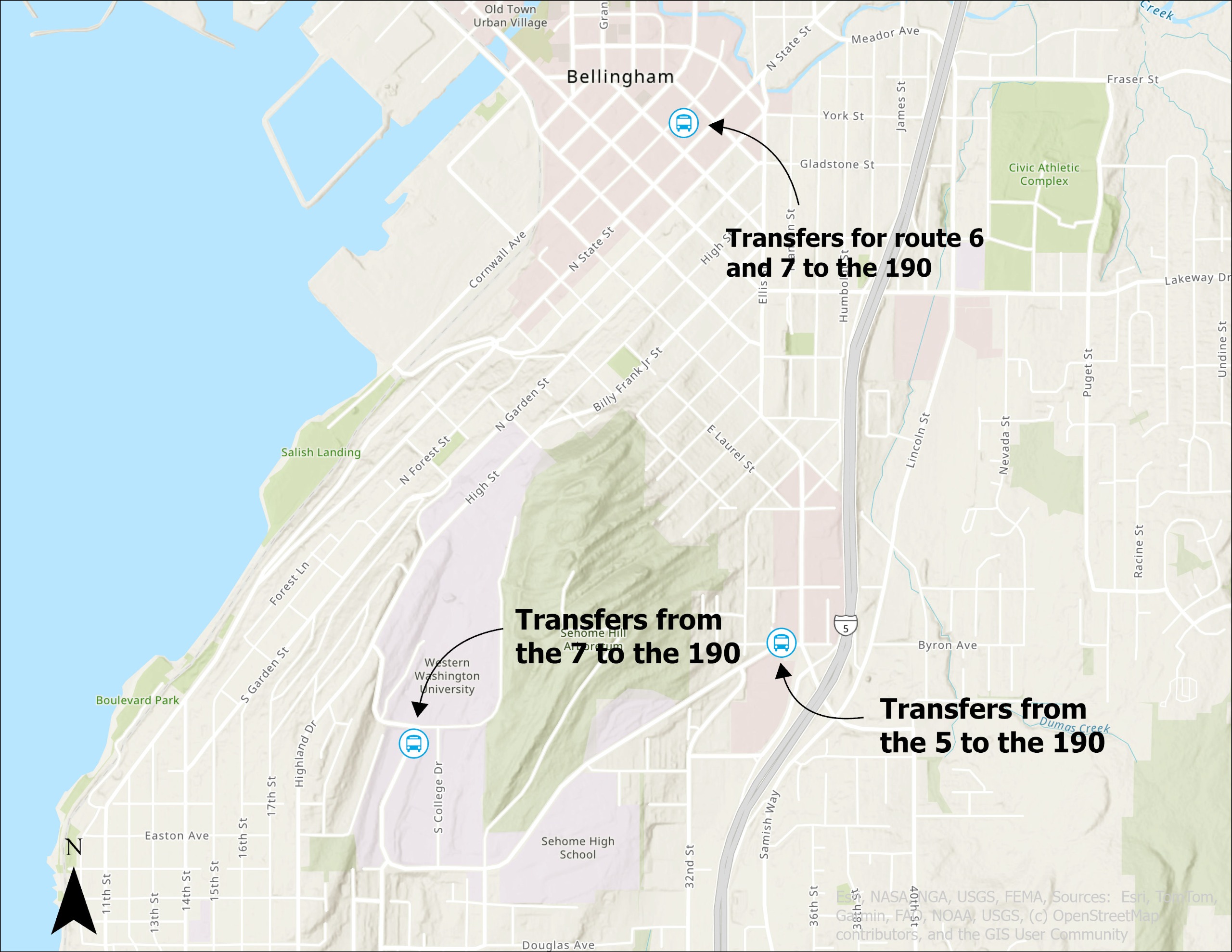
Utilizing Automated Passenger Counter (APC's)
This service change will be the first at WTA to utilize our new Automated Passenger Counter (APC) Data. In the winter of 2025, WTA installed APCs on all of its fixed route vehicles. Automated Passenger Counters use infrared sensors to detect when riders board and alight buses, calculating bus load, distance traveled, and a range of other factors. This system provides much more insight into rider patterns than was previously available to the WTA through the use of fare box data. For this project, ridership data for March of 2025 was utilized to understand rider trends, allowing the planning team to carefully craft schedules to limit underutilized bus runs while meeting peak demands.
How we used the data:
- carefully studied peak loads (the maximum number of people on the bus at any point in time along the route) at key stops to target trip arrival and departure times
- looked at loads between stops to understand the impacts of transfer points
- recognized patterns in ridership and ways to shift routing to minimize peak load impacts

Image 1: Map of WTA Bus Loads by Stop in South Bellingham




